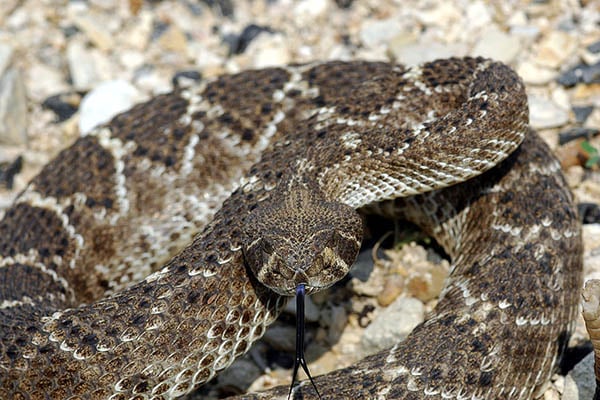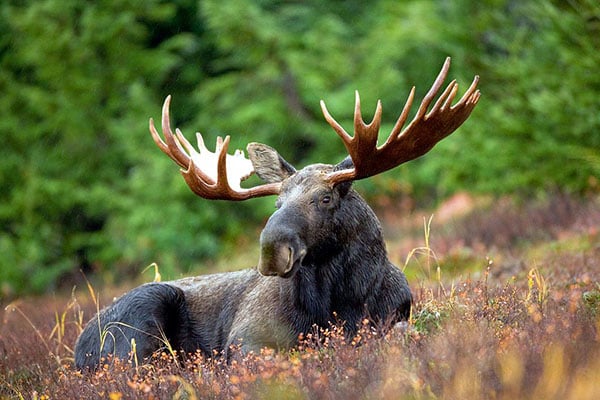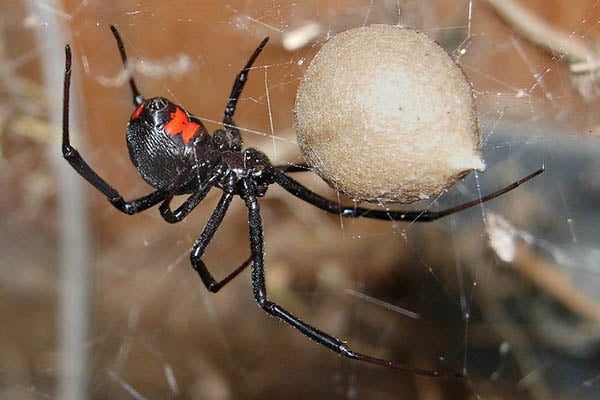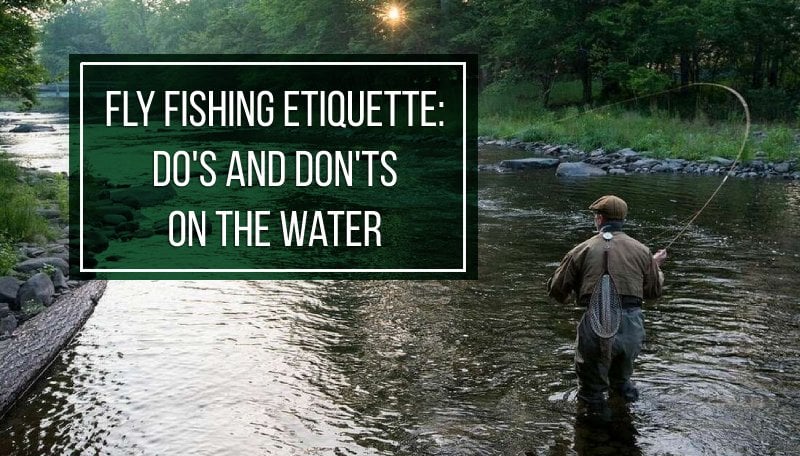Last Updated on
Now that we’ve covered the larger dangerous animals you might unexpectedly encounter in the wild, we move on to the smaller animals that might be lurking in the bushes right below your feet. Up first, the always feared venomous snakes.
If you haven’t already, check out the first two parts of the series about Bears and Mountain Lions and Other Larger Animals like moose.
Rattlesnakes
Probably the “most infamous” venomous snake in North America is the rattlesnake. The most popular variety, the western diamondback, can be identified by the dark diamond-shaped patterns on its back, but most will be alerted to a rattlesnake presence by their tell-tale rattling sound. Contrary to popular belief, rattlesnake bites are not immediately fatal, but they can lead to death if left untreated. Rattlesnakes use a hemotoxin that attacks red blood cells, and this toxin can eventually shut down internal organs, which is the real threat posed by a snakebite. However, hemotoxin isn’t as dangerous as neurotoxin, which can shut down your heart or breathing quickly depending on the dose of toxin you get. The important thing to focus on with a rattlesnake bite is that you have time to get to treatment if you act quickly. Often times a rattlesnake bite isn’t lethal if you can get to a doctor.
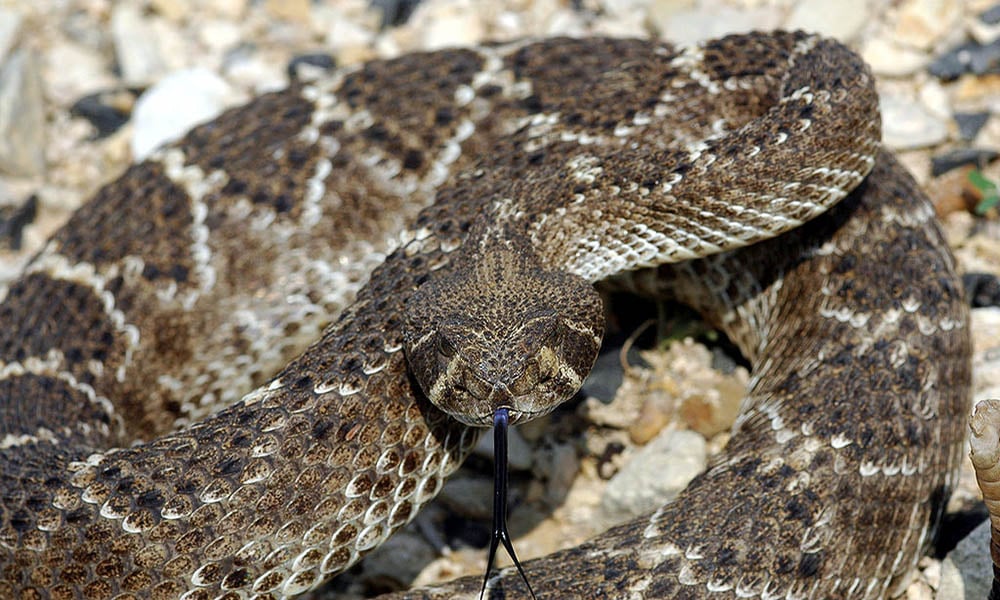
As for what to do in a rattlesnake encounter, avoidance is the most important element. As long as you’re not in striking distance, you’re relatively safe. Never approach a rattlesnake, even when it is not rattling at you. Never corner a rattlesnake as it will be more inclined to bite versus when it is encountered in the open. Here are some other tips:
- When hiking, avoid entering narrow spaces between rocks or gaps along a rock face without checking for rattlesnakes. Contrary to the common “snake hole” concept, snakes do not dig their own burrows. Instead, they either occupy slots in or under rocks or take over burrows dug by other animals. Many rattlesnake bites happen when a hiker surprises a rattlesnake. If you’re checking your forward path, especially when bouldering or hiking through an area with a lot of spots for snakes to hide, you’re less likely to surprise these dangerous snakes.
- If you should hear a rattle, the best option is to freeze and examine your surroundings. Jumping suddenly at the sound of the rattle could mean you’re jumping towards the snake, not away from it. The rattlesnake does not want to strike at you unless it has to, and once you identify where it is, back away slowly and you should avoid a bite. Don’t assume there is only one snake around, and exercise caution even after you’ve moved away from the snake that is rattling.
- If you’re bitten, you’ll want to get to a doctor as soon as possible, but don’t run wildly towards your vehicle. You’ll want to do everything you can to stay calm as an accelerated heart rate can quicken the effect of the toxin. Walk at a determined but measured pace towards help if you’re alone, and as soon as you can get off your feet and rest, do it. Don’t drink any water or eat any food until after seeking medical attention as this will encourage the spread of the toxin. Finally ensure your clothes are loose or take them off to make sure blood is flowing evenly throughout your body. Constricting blood flow can be dangerous for the victim, and tight-fitting clothing should be removed.
- Only medical attention can save you from a snakebite. Snake bit kits do not work (more on that later). You can help a wound on the hand by leaving it down at your side and below the heart. Stay calm and your chances of surviving go way up.
- Do not kill a rattlesnake if possible. It may seem like you’re helping others by sparing them a potentially dangerous encounter, but it some areas the rattlesnake population is dwindling, and they are important to local ecosystems. You’re also risking danger by trying to kill it. All in all the snake is just better left alone.
Rattlesnake Varieties
There are many different species of rattlesnakes in the US, and they aren’t just found in the Western US. The three most popular varieties you’ll find are the western diamondback, the eastern diamondback and the timber rattlesnake. As the name suggests, the western diamondback is located in the Western United States, and this very aggressive species is what most envision when they think rattlesnake. However, the eastern diamondback can be larger than the western diamondback, and they have a more dangerous reputation because they inject large quantities of venom in each bite. Eastern diamondback rattlesnakes can also swim long distances while western diamondbacks prefer more arid regions.
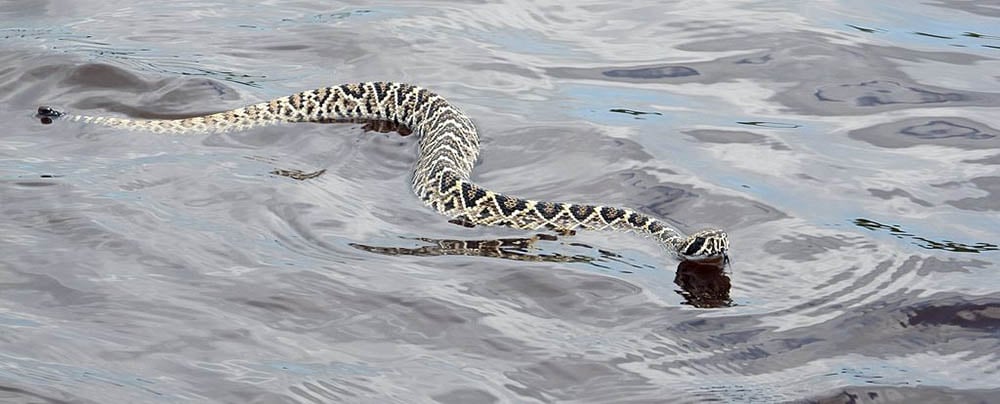
Timber rattlesnakes are found mostly in the Southeastern region of the US, and although they are smaller than their diamondback cousins, they are still dangerous. Timber rattlesnakes prefer forested areas as their name suggests, and they are less aggressive than diamondback rattlesnakes. Given the chance, timber rattlers would rather hide or flee versus confront a human, but you should still give them plenty of room if encountered. Every variety of rattlesnake, even those not listed here, is dangerous because of their hemotoxin venom.
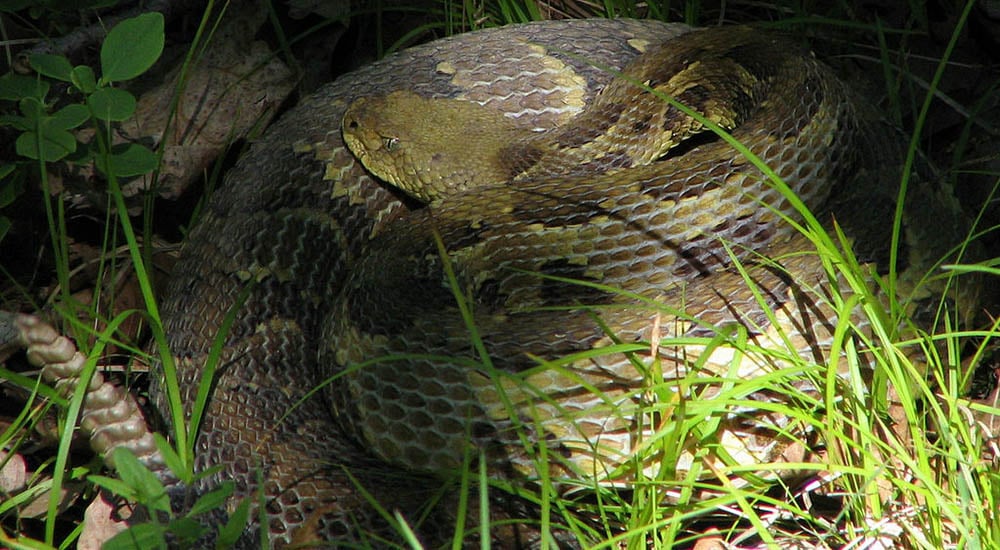
Gear Suggestions
Snake bite kits are completely useless, and if you have one you’re better off throwing it in the trash. Most experts argue that by the time you get the suction cup on the wound, you’ll only be able to extract a small amount of the venom. Cuts at the wound to increase venom extraction are also useless, and they only encourage infection in the bite. Following the steps list above on confrontation are much more likely to save your life, and in those cases where you’re really far away from a hospital, special arrangements should be considered if you are bitten. You may need to call for an air evacuation as your best hope of surviving the bite.
What can help is a pair of snake gaiters. Many times when you surprise a snake, it will strike at your legs, and snake gaiters might just save you from a bite. Gaiters are useful in situations where venomous snakes are common or scenarios where you’re tracking through thick bush and you have little chance to identify the snake before it strikes.
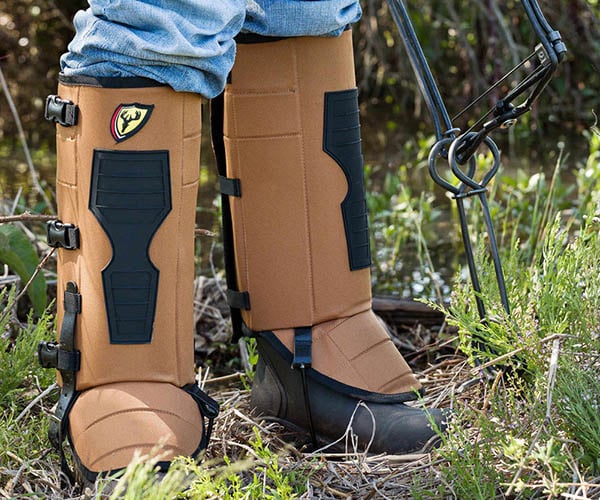
Cottonmouth
The steps on how to avoid and treat venomous snakebites in the US are pretty much the same, and you’ll want to follow the steps above regardless of where you are. But there are two even more dangerous snakes that you should be aware of in the US. The first is the cottonmouth or water moccasin, and it is native to the Southern United States. Unlike the other snakes in this guide, the cottonmouth is a water snake, and it gets its name from the cotton like appearance of its open mouth. It also has a triangular head and angled, red eyes, but other than those features, the snake looks a lot like other, nonvenomous snakes. While the cottonmouth is similar to a rattlesnake in some ways, its bite is much more painful and lethal. It doesn’t typically attack humans unless threatened, but if you’re bitten by a cottonmouth, consider your timetable for treatment smaller than the rattlesnake.
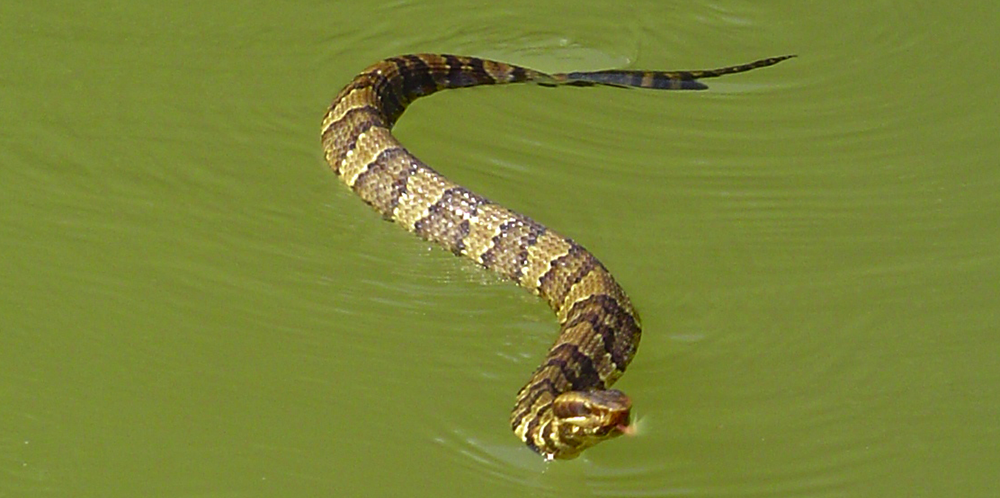
Coral Snake
The most venomous snake in the US is the coral snake, and it uses neurotoxin instead of hemotoxin in its venom. The coral snake has a distinct appearance with larger stripes of red and black separated by thin yellow stripes. The coral snake’s head is also black and it has round eyes. There is a look alike snake, the king snake, that has a similar appearance to the coral snake, but the red and black stripes touch each other and aren’t separated by the yellow stripe. That said, if you see a colorful red, black and yellow snake, it’s best to just stay away. Still if you’re bitten, it’s good to know which variety you encountered before you panic.
The good news with coral snakes is that they are shy and prefer to spend most of the day under debris. They aren’t necessarily threatening to humans, but they will attack if you don’t leave them alone. Coral snakes don’t strike like rattlesnakes, but rather clamp on to their victim. The longer the coral snake bites you, the more venom you get. Left untreated, a coral snake bite will stop your breathing or your heart, and you should stay as calm as possible and get medical attention immediately.
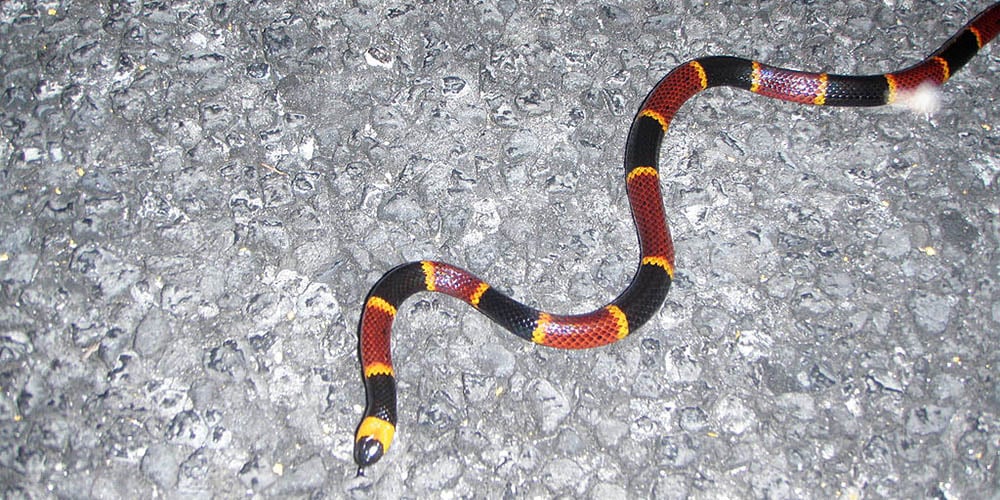
Next in this series, we turn to the two venomous spiders in the US and scorpions.
Images one and thumb, three and four courtesy of Wikimedia Commons.
